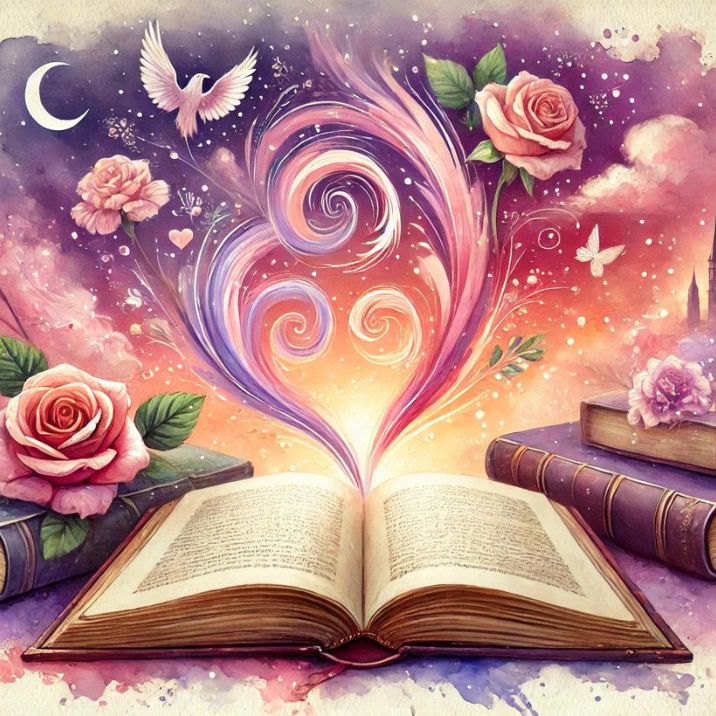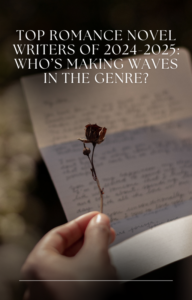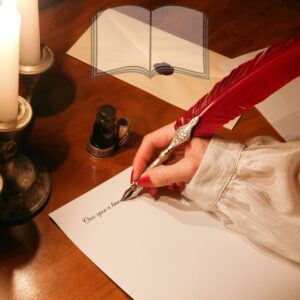Knowing how to write a romance novel outline is what you need to outshine in the world of romance writers. Whether you are the type of writer who does not know how to start or one who does not know how to stop, this guide will help you sort your writing outline.
Writing according to an outline will help you from the hassle of rewriting, and dropping plotlines, and help you craft a good ending. Your readers will expect all kinds of drama, angst, and heartbreak from your story. Let’s make sure you deliver all reader demands by learning to outline a romance novel.
Wondering How to Outline a Romance Novel?
There are several things to consider when crafting a romance novel outline.
1. Research about your target audience
Even though it is believed that most romance readers are women, a good number of men are also interested in this genre. Knowing who you are writing for helps you craft your story according to their preferences and ensure they feel connected and enjoy it.
According to statistics:
- There is an increase in romance reading at a younger age.
- 45% of romance readers are people with a college degree.
- Even though 82% of romance readers are women, there is an 18% ratio of male romance readers.
- An average romance reader reads one romance novel per week.
Knowing your audience will help you create a connection between characters and readers. You also need to identify the emotional responses that your audience prefers, for example, redemption, heartbreak or passion.
2. Develop Strong Characters
There are many reasons why developing strong characters is an important step in learning how to write a romance novel outline. Well-written characters do more than just make your story popular, they drive the plot, create emotional connections, and keep readers invested.
Good characters also make the romance more believable. Story conflict is an important element and it can only be developed with a strong character storyline. Moreover, make your character have a unique personality since that determines both internal and external conflicts in your character’s story. These conflicts are what make your character’s story relatable and intriguing.
- Start from their characteristics such as physical appearance, childhood, career, weaknesses, strengths, etc. These details give your character depth and make them feel real.
- Next, move to the conflict that will impact them and their relationships. This could include personal struggles, external traumas, or past conflicts that affect how they are with others.
- Lastly, complete it by adding the romance convention. Whether it is a slow-burning attraction or a twister, make sure your character’s development is in order with your romantic narrative.
3. Learn about Romance Conventions
It is important to know the genre conventions when writing a romance story outline.
Usually, traditional romance has four key components:
- The protagonists fall in love with each other and the story grows.
- A conflict creates tension that keeps the readers invested in the story. This conflict can arise from internal struggles or external obstacles, challenging the main character’s relationship.
- A unique, once-in-a-lifetime love develops between two people that adds depth to the story. It makes the romance feel genuine and makes the reader connect with the story deeply.
- A resolution occurs when the protagonists overcome challenges that allow them to be together creating a satisfying ending.
All these elements will help you shape the overall plot arc that rises, peaks, and concludes like a roller coaster. While everyone can use these conventions, getting as creative as possible with them is the real deal. An original novel will have originality without cliches and keep the readers hooked.
4. Learning about Romance Sub-genre conventions
When you learn how to outline a romance novel, sub-genre is an important aspect to consider. It influences the conflict, flow, and content of the story.
For example, if the sub-genre is a sweet and clean romance, profanities and sexual content are less. Similarly, erotic romance features sexual content that occurs throughout the novel and usually has less focus on character development.
Stories with happy endings conclude with a romance and sometimes the characters do not end up together, but it is a peaceful ending nonetheless. Understanding these conventions will help you formulate a perfect romance story outline.
5. Story Arc-3- Act Structure
Now that we have our basics figured out, you start plotting your novel. We will look at the 3-act structure of the plotline. It is a method of plot writing that movie writers and scriptwriters use.
To break it down, we have:
1. Act one:
Act one is the first meeting between the protagonists that starts from 1st or 2nd chapter of the novel. It slowly builds up a conflict or personal barrier such as past trauma or any external pressure, often leading to rejection.
Hook
It starts with a hook, your first chance to grab the reader’s attention. This is where you can show your protagonist their daily life, or give an insight into your character’s emotional issues. These issues can be the reason why the character struggles to find love in their life.
Fueling Incident
It then moves to the fueling incident where the characters appear for the first time together. This can happen through many factors like friends and family pushing them or life brings them closer through fate working out. Depending on your storyline, they can work in the same company or have vacays in the same place.
This initial attraction might spark an immediate connection, or it can also lead to an instant dislike. The characters might initially discourage the idea of a relationship and then slowly build up to it.
The First Plot
The first plot point is an event that forces the characters to stay connected if the characters aren’t already bound together. It could be a marriage of convenience or some business agreement, either way, this point defines the character’s goals and introduces a subgenre.
2. Act two:
Despite initial resistance, the characters are now relatively coming together. However, they test the water in their relationship, which usually results in a temporary withdrawal. Sometimes they reconcile and fall in love deeply but internal conflicts cause them to be apart again which builds up more conflict.
First Pinch Point
Both the inner and outer conflicts are highlighted at this point. Attraction starts to build up and the characters start to think that the idea of a relationship might work.
This point could share an intimate moment as in a first kiss, the first time they touch each other on accident, or perhaps when they start to trust each other to achieve a goal together.
The Midpoint
Now it is time for a new development. A false high develops that can deceive the readers into believing in the truth opposite to what is going to happen.
The readers might believe that the characters are going to have a happy ending or that they are not going to end up together. This is the moment both the characters show what they truly need.
The Second Pinch Point
This point focuses on the character’s internal conflict. Intimacy might still grow, but the protagonist’s fear or false beliefs rise, doubting the whole relationship. These doubts can link up to past relationships or experiences, such as distrust or unworthiness.
The Second Plot Point
At this point, the worst fears of both the characters come true. Sometimes it is a breakup leading to separation, linked with external events such as losing a loved one. The characters might have to make a difficult decision such as choosing between love and fear.
3. Act three:
The characters focus on being together, resolving the issue, and reaching a satisfying ending. Depending on your story, the ending can be a happy-ever-after or a happy-for-now kind.
The Crisis
At the point of crisis, one or both characters decide if they want to solve their internal conflicts for true love or give in to their fears. Solving crises also shows the lesson of the story, since the characters come to the stage where they choose to resolve their internal or external conflicts.
The Climax
The fueling incident raised the question ‘Will the characters get together?’ and the climax is where it gets answered. This is the part where the characters get back together, often with some gesture that proves their love.
The Resolution
The resolution is the part where a glimpse of the character’s life after they have embraced their true love is shown.
There is way more detail to these acts than mentioned and you can always research it before writing a proper romance novel outline.
6. Structuring Individual Chapters
Now that you have finished the outline, it is time to structure the individual chapters.
Every chapter should have a goal that moves it forward. Start with a hook or middle of the story instead of a slow build-up to immediately catch the reader’s attention. You should also avoid lengthy details since it does not help a short attention span and is boring to read.
You can begin by developing a sequence of events that ensures characters change, learn, and discover new things. Dialogue is a powerful tool in romance novels, so use it carefully to reveal character traits, emotions, and relationship dynamics. These well-crafted dialogues are going to help you increase the tension and make the plot stronger.
Try ending the chapters with a cliffhanger to motivate the reader to keep reading further. Structuring your chapters is the key to maintaining reader interest and a perfect end note on learning how to write a romance novel outline.
Conclusion
Even though tempting to skip, consider learning how to write a romance novel outline. A proper romance novel outline will help you connect with your readers properly. However, while following the conventions, ensure to be original and creative. Contact us if you are looking for services related to romance novel outlining.
Keep your focus on creating authentic and relatable characters and constructing plot twists that keep the reader hooked till the end. Best of luck on your writing journey!
If you want to do a Romance Novel, opt for our Romance novel writing services.
Continue Reading: Top 10 Popular Romance Themes for Your Novel














